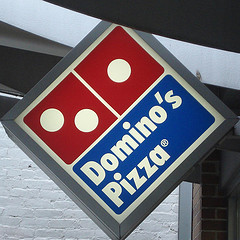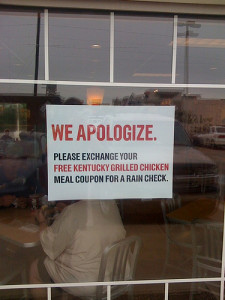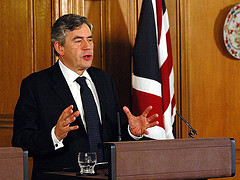Apology Update: Compare and Contrast
A public apology is a good way to express remorse and offer reconciliation to an affected party. But the very act of apologizing can be daunting.
If delivered effectively, an apology can mend relationships and restore trust between two or more parties.
If delivered effectively, an apology can help maintain company’s competitive advantage, reduce litigation costs and minimize business disruptions.
If delivered effectively, an apology can create a perception of genuine regret on behalf of the offender and mend his or her reputation.
But here is a question:
Can an effective delivery distract the audience from an insufficient apology?
And,
Can a weak delivery diminish a powerful message of a genuine apology?
I invite you to look at three recent apologies and share your opinion about the effectiveness of each apology is in terms of its message and its presentation.
KFC’s initial plan to team up with Oprah to create a free meal giveaway seemed to be the recipe for the perfect promotion. Instead, it became the recipe for the perfect disaster.
The crisis that KFC faced afterwards undermined the company’s reputation and gave an opportunity to its competitors to use KFC‘s turmoil to their advantage.
The company offered up to four coupons for a free meal to its customers, available to download at the company’s website. The company wildly underestimated the response. The supply shortage and mis-steps by the company and its franchisees created a national disaster for the brand.
KFC U.S. president, Roger Eaton issued a video apology.
He said, “…we are really sorry for the inconvenience and we thank you for understanding.” The company posted apology on YouTube where 181,753 people watched it as of mid-May.
What worked:
Mr. Eaton’s performance made the apology seem more like a KFC commercial than an expression of remorse. He was engaging and emotional, he kept eye contact and gestured broadly, he modulated his voice and smiled. KFC deserved credit for taking the initiative to come up with a creative way to apologize.
What didn’t work:
But the apology itself is wanting. Mr. Eaton’s promotional tone may put off viewers. What lies behind his dynamic presentation is lack of a sufficient apology.
Although he expresses an intention to apologize, it’s not clear what Mr. Eaton apologizes for, “The response to our free Kentucky grilled Chicken offer has been overwhelming. We’ve had lines out the door. Everyone wants to get the great taste of our new product. So we can’t redeem your free coupon at this time.”
The link between those thoughts – everyone wants to get the taste of our new product, so we can’t redeem your free coupon – is tenuous at best.
It is also not clear how the reparation offered by the company could solve the existing problem of supply and demand imbalance. And it puts the burden on the customer to jump through hoops to receive the free meal.
In a press release, the company said:
“Those customers may visit a participating KFC restaurant to receive a rain check form. They will then receive via mail a rain check coupon for the free two pieces of Kentucky Grilled Chicken (manager’s choice), two individual side items and a biscuit. The rain check coupon, which will be redeemable at a later date for a two week period, will also entitle the holder to a free Pepsi to go with the free meal, as a way of apologizing for the inconvenience.”
And finally, Mr. Eaton chose a wrong tone for delivering his apology. The upbeat tone of his presentation, made him look more gloating than repentant.
The Domino’s Pizza Apology

Patrick Doyle, the CEO of Domino’s Pizza, apparently had no choice but to apologize for a youtube video that showed inappropriate behavior of two employees in one of the Domino’s locations. The video was seen more than 930,000 times on YouTube. Read more about Domino’s Pizza case in Laurel Hart’s blog post.
What worked:
Mr. Doyle’s apology had everything to become a genuine apology: he acknowledged the wrongdoing, thanked the members of the web community for their help to inform he company about the wrongdoing, expressed regret about the incident, said that the company is taking the incident with the utmost seriousness, and talked about the measures that the company would take to investigate the matter and make sure the incident would never happen again. He used strong language, “We sincerely apologize for this incident. …” ,“…. we are taking this incredibly seriously”, “There is nothing more important or sacred to us than our customers’ trust.”
Given the speed, that the company responded to the crisis without having additional time for Mr. Doyle’s rehearsal, his apology deserves more credit.
What didn’t work:
The message of Mr. Doyle’s apology was strong – but unfortunately – his delivery wasn’t. Throughout the video, Mr. Doyle maintained a leaning posture and looked away from the camera. Mr. Doyle’s weak delivery undermined a strong message of the apology. His apology would have been more effective if he had looked straight at the camera addressing the audience, gestured broadly and maintained a better posture.
Watch Domino’s apology here.
Gordon Brown’s Apology over MPs’ expense
The British prime minister’s apology over members of Parliaments’ (MPs’) expenses came across as true and genuine. In a speech to the Royal College of Nursing conference in Harrogate Mr. Brown apologized on behalf of parliamentarians of all parties for the abuse of their expense accounts that became public earlier this month. Members of Parliament (MPs) came under fire for creating the expense system that was poorly policed and corrupted. The scandal came as a culmination of Gordon Brown’s week of unfortunate events.
From The Daily Beast:
“Brown has just gone through what even his close allies acknowledge is the worst week of his premiership. On Wednesday, he lost a key vote in the House of Commons, thanks to defecting MPs from his own Labour Party. The next day, the [he] was forced to retreat on another issue to avert another humiliating bashing. The previous week was in some ways even more damaging. Brown attracted widespread ridicule for a cringe-making political mini-speech on YouTube.Then a day later, his chancellor of the Exchequer, Alistair Darling, unveiled a recession-driven budget that was poorly received and, for many, an admission of Labour missteps and overspending since it came to power in 1997.”
Prime minister’s initiative to issue an apology was noticed by many and praised by some.
What worked:
Mr. Brown delivered his apology in a very effective way: he gestured broadly, had eye contact with the audience, modulated his voice, stressed key words and used pauses.
He admitted mistakes on behalf of all parties, expressed remorse and talked about trust, responsibility:
“I want to apologize on behalf of politicians, on behalf of all parties, for what has happened in the events of the last few days.
We must show that, where mistakes have been made and errors have been discovered, where wrongs have to be righted, that that is done so immediately.”
Mostly because of the delivery, his apology came across as authentic and genuine.
What didn’t work:
But if some critics praised the effectiveness of Gordon Brown’s apology, most of them wrote that his apology was too little too late – and in some cases – too transparently tactical.
To me it sounded more like a shallow apology. It had 3 out of 4 key elements of a successful apology (acknowledgment, remorse, promise, restitution). Mr. Brown acknowledged the wrongdoing, expressed regret and promised to remediate the offense.
But what was not clear is how Mr. Brown plans to provide restitution.
The magnitude of the MPs’ expenses crisis in UK already reached its zenith and would need more to restore public trust than just a beautifully delivered apology by the British leader. The British Government will have to demonstrate commitment to fix the existing problem by creating a more transparent system of MPs’ expenses.
One more important detail to pay attention to is how Gordon Brown uses a weaker formula to apologize by saying, “I want to apologize,” which often signals an intention. It would be more powerful for him to say, “I apologize ” or “I’m here to apologize.”
Watch Gordon Brown’s apology here:
Each of these examples provides its own teachable moment to anyone interested in the subject matter of apology.
As we saw in KFC’s example, putting a hollow apology in an eye-catching package can be disastrous for a brand and can potentially create more reputation damage for a company. An eye-catching delivery can distract customers’ attention from an insufficient apology, but will spark more customers’ anger and disappointment when the faux apology is discovered.
Delivering a well-crafted apology without providing restitution, as in Gordon Brown’s case, can be seen as shallow or transparently tactical. Shallow apologies can question the confessor’s true intentions and diminish credibility. To defuse anger of an affected party and to win trust, a confessor should always deliver a clear explanation of how he/she plans to remediate an offense or fix a problem.
Taking a powerful delivery out of the equation can undermine a true apology. And as we saw in the Domino’s case, an ineffective delivery can diminish a strong message of an apology and make it look weak and distorted. An effective presentation could set up the right tone for the delivery of an apology and help a confessor come across as humane and repentant.
Most often, we can’t control whether our apology will be accepted by an affected party. But what we can control is what we say to apologize and how we say it.
In the message of an apology, a confessor should demonstrate that he/she understands the wrongdoing and will not repeat it in the future. He/she will have to provide some sort of restitution to an affected party that will help repair relationships and restore trust.
In the delivery of an apology, a confessor should demonstrate remorse and repentance; empathy and humility.
An apology is authentic and, therefore, effective only when it has a combination of a strong message and a powerful delivery.
I’ll be happy to know what your reaction was when you saw each of these apologies. Did each speaker come across as genuine and authentic? Were you comfortable with each speaker’s style of delivery? Whose apology message was stronger?






Leave a Reply
Want to join the discussion?Feel free to contribute!